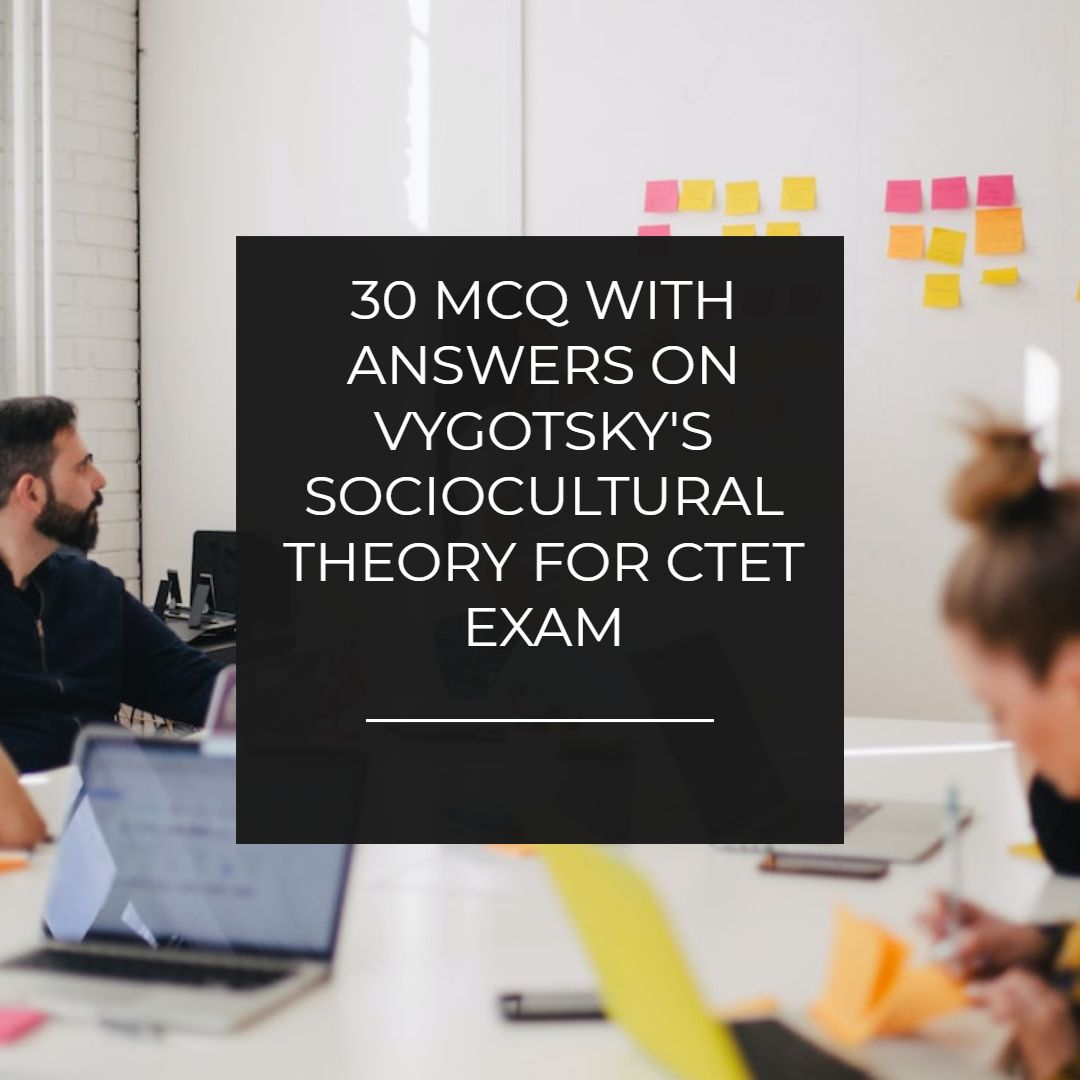30 MCQ With Answers on Physical Development for CTET exam
30 MCQ With Answers on Physical Development for CTET exam
Physical development involves the growth and maturation of a child’s body. It includes motor skills development, coordination, and overall physical well-being. Teachers need to be aware of the age-appropriate physical milestones and design activities that promote healthy physical development.

Here are 30 multiple-choice questions with answers on physical development for the CTET exam:
Which of the following is not a gross motor skill?
a) Running
b) Jumping
c) Drawing
d) Climbing
Answer: c) Drawing
Fine motor skills involve the coordination of:
a) Large muscle groups
b) Small muscle groups
c) Balance and agility
d) Strength and endurance
Answer: b) Small muscle groups
The ability to control and coordinate movements is known as:
a) Gross motor skills
b) Fine motor skills
c) Motor development
d) Motor coordination
Answer: d) Motor coordination
Which of the following is an example of a fine motor skill?
a) Catching a ball
b) Riding a bicycle
c) Tying shoelaces
d) Skipping rope
Answer: c) Tying shoelaces
Which of the following statements is true about the development of motor skills in children?
a) Fine motor skills develop before gross motor skills.
b) Boys develop motor skills faster than girls.
c) Motor skills develop in a sequential and predictable pattern.
d) Motor skills are primarily influenced by genetic factors.
Answer: c) Motor skills develop in a sequential and predictable pattern.
The ability to maintain a stable body position while performing tasks is called:
a) Balance
b) Coordination
c) Agility
d) Flexibility
Answer: a) Balance
Which of the following is an example of a locomotor skill?
a) Hopping
b) Throwing
c) Catching
d) Kicking
Answer: a) Hopping
Which of the following factors can impact a child’s physical development?
a) Nutrition
b) Sleep patterns
c) Physical activity levels
d) All of the above
Answer: d) All of the above
Which of the following is an example of a non-locomotor skill?
a) Running
b) Jumping
c) Twisting
d) Skipping
Answer: c) Twisting
The ability to use both hands together to perform tasks is called:
a) Hand-eye coordination
b) Bilateral coordination
c) Fine motor coordination
d) Gross motor coordination
Answer: b) Bilateral coordination
At what age do children typically start to walk independently?
a) 6-9 months
b) 9-12 months
c) 12-15 months
d) 15-18 months
Answer: b) 9-12 months
The process of developing and refining physical skills through practice and repetition is known as:
a) Motor learning
b) Motor planning
c) Motor control
d) Motor programming
Answer: a) Motor learning
Which of the following is an example of a fundamental movement skill?
a) Skipping
b) Writing
c) Typing
d) Playing chess
Answer: a) Skipping
The ability to move different body parts in a controlled and coordinated manner is known as:
a) Flexibility
b) Strength
c) Endurance
d) Dexterity
Answer: d) Dexterity
Which of the following is a common developmental milestone for gross motor skills in infants?
a) Crawling
b) Skipping
c) Buttoning a shirt
d) Riding a bicycle
Answer: a) Crawling
Which of the following is an example of a manipulative skill?
a) Kicking a ball
b) Jumping jacks
c) Skipping rope
d) Balancing on one foot
Answer: a) Kicking a ball
The ability to move quickly and change direction efficiently is known as:
a) Flexibility
b) Agility
c) Coordination
d) Balance
Answer: b) Agility
Which of the following is an example of a locomotor skill?
a) Balancing on one foot
b) Throwing a ball
c) Skipping
d) Catching a ball
Answer: c) Skipping
Which of the following is a factor that can influence a child’s balance and coordination?
a) Inner ear function
b) Visual acuity
c) Strength and muscle tone
d) All of the above
Answer: d) All of the above
Which of the following is a common developmental milestone for fine motor skills in toddlers?
a) Grasping objects with a pincer grasp
b) Tying shoelaces
c) Using scissors to cut paper
d) Writing their name
Answer: a) Grasping objects with a pincer grasp
The ability to move a joint through its full range of motion is called:
a) Flexibility
b) Strength
c) Endurance
d) Balance
Answer: a) Flexibility
Which of the following is an example of a manipulative skill?
a) Hopping on one foot
b) Riding a tricycle
c) Throwing and catching a ball
d) Balancing on a beam
Answer: c) Throwing and catching a ball
The process of learning to control and coordinate movements of the body is known as:
a) Motor development
b) Motor skills
c) Motor planning
d) Motor control
Answer: d) Motor control
Which of the following is an example of a fine motor skill?
a) Running
b) Jumping
c) Coloring
d) Climbing
Answer: c) Coloring
The ability to sustain physical activity over a period of time is called:
a) Flexibility
b) Strength
c) Endurance
d) Balance
Answer: c) Endurance
Which of the following is an example of a non-locomotor skill?
a) Walking
b) Jumping
c) Bending
d) Kicking
Answer: c) Bending
The ability to control and manipulate small objects with precision is called:
a) Hand-eye coordination
b) Bilateral coordination
c) Fine motor coordination
d) Gross motor coordination
Answer: c) Fine motor coordination
Which of the following factors can impact a child’s physical development?
a) Genetics
b) Environmental factors
c) Nutrition
d) All of the above
Answer: d) All of the above
Which of the following is an example of a locomotor skill?
a) Balancing on one foot
b) Hopping on one foot
c) Skipping rope
d) Throwing and catching a ball
Answer: c) Skipping rope
The ability to maintain control of the body while moving or stationary is called:
a) Flexibility
b) Strength
c) Balance
d) Agility
Answer: c) Balance
I hope these questions and answers on physical development are helpful for your CTET exam preparation!





Nice blog. Thank You for sharing the great information. This blog is very useful.
https://www.yankeeclippersbarbershop.com/
I've bookmarked this article for future reference. It's a fantastic resource. visit - https://www.shro.org